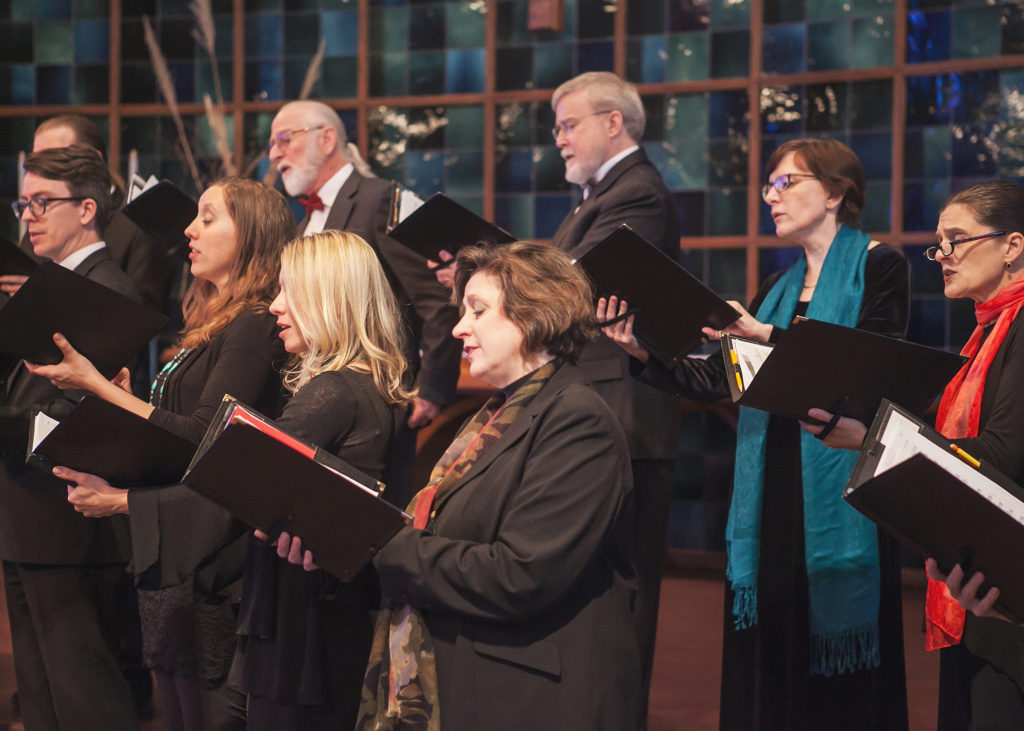Tracing “The Way of St. James” in Song
A review by Marc Shulgold
Whether by car, airplane, bus, train or bike, there’s something appealing about taking a trip. Usually, it’s for pleasure, visiting friends or relatives or simply for discovering new places. But for many of the world’s Catholics, one journey has always carried significance beyond the mere act of leaving home.

“The Way of St. James,” it’s called – the Pilgrimage of Compostela. More than a journey, it is a lengthy walk of devotion, sometimes covering 500 miles, ending at the cathedral in the northwest Spanish town of Santiago de Compostela. The various routes of this Camino de Compostela retrace the steps of St. James, whose remains are said to be housed in the cathedral. Over the generations, millions have gone on that pilgrimage.

Capturing those steps in music would seem an attractive way to re-create the pilgrimage, and to honor those who have taken that journey – which is what Timothy Krueger director of his outstanding St. Martin’s Chamber Choir, sought to do. Trouble is, finding a collection of choral works specifically connected to that pilgrimage proved nearly impossible.

Krueger’s imaginative solution resulted in a profoundly moving experience for those who gathered in St. Andrew’s Episcopal Church on November 9 – the second of three weekend performances by a 12-member contingent from St. Martin’s. This musical journey, titled “Along the Way: Songs of Pilgrimage,” consisted of works the conductor discovered, mostly in Latin, written by little-known Spanish Renaissance composers who resided in towns along the fabled route. Magically, the intermission-less program evolved into its own journey for listeners. It was as if we had joined the pilgrims, stopping with them to visit centuries-old cathedrals for rest and inspiration.

Because the Catholic Church had designated Latin as its official language, all but one of the 11 a-cappella selections were sung in that language. Only a charming, dance-like song of celebratory feasting (by Juan del Encina) was delivered in Spanish, augmented by tambourine and unison hand claps. The drone of a hurdy-gurdy accompanied the evening’s chant-like recessional, drawn from a 12th-Century manuscript known as the Codex Calixtinus – a source also used for the processional singing that began the program.

The bulk of the music originated from the 16th-century, never sounding redundant, thanks to Krueger’s effective mix of early and late Renaissance pieces. Particularly moving was a brilliant, mournful work by Diego de las Muelas, its text seemingly directed at traveling pilgrims: “O all ye that pass by the way, attend and see if there be any sorrow like to my sorrow.” Regardless of the time and place, every selection was sung impeccably by the dozen singers, positioned in a semi-circle in front of the altar and directed with passion and precision by Krueger and, in a pair of works, conducting intern Michael Ballard.
Adding to this engaging evening was the insertion of eight understated readings from Gene McCullough, his words capturing the seriousness as well as the bewildering challenges of this months-long pilgrimage. Most of the texts were penned long ago (“Travelers beware – the Devil waits at the side of the road.”). In a refreshing touch, McCullough included some personal recollections from his own journeys to the Spanish cathedral. “Only three-quarters of a million (steps) to go,” ended one of his delightful entries.
Through rarely heard centuries-old music, we visited the villages and towns of Azpeitia, Pamplona, Burgos, León, Palencia, before finally arriving in Santiago de Compostela. I had wondered if some projected images of cathedrals, the Spanish countryside, or even photographs of modern-day pilgrims might have been a nice addition. But as the audience traveled through this engaging parade of heavenly choral works (each, in their way, demonstrating the evolution of Renaissance harmony), it became clear that these songs of devotion, surrounded by McCullough’s readings, required no visual enhancement. After all, a profoundly inspiring journey of the imagination can begin, not with a single step, but with a single sung note.








